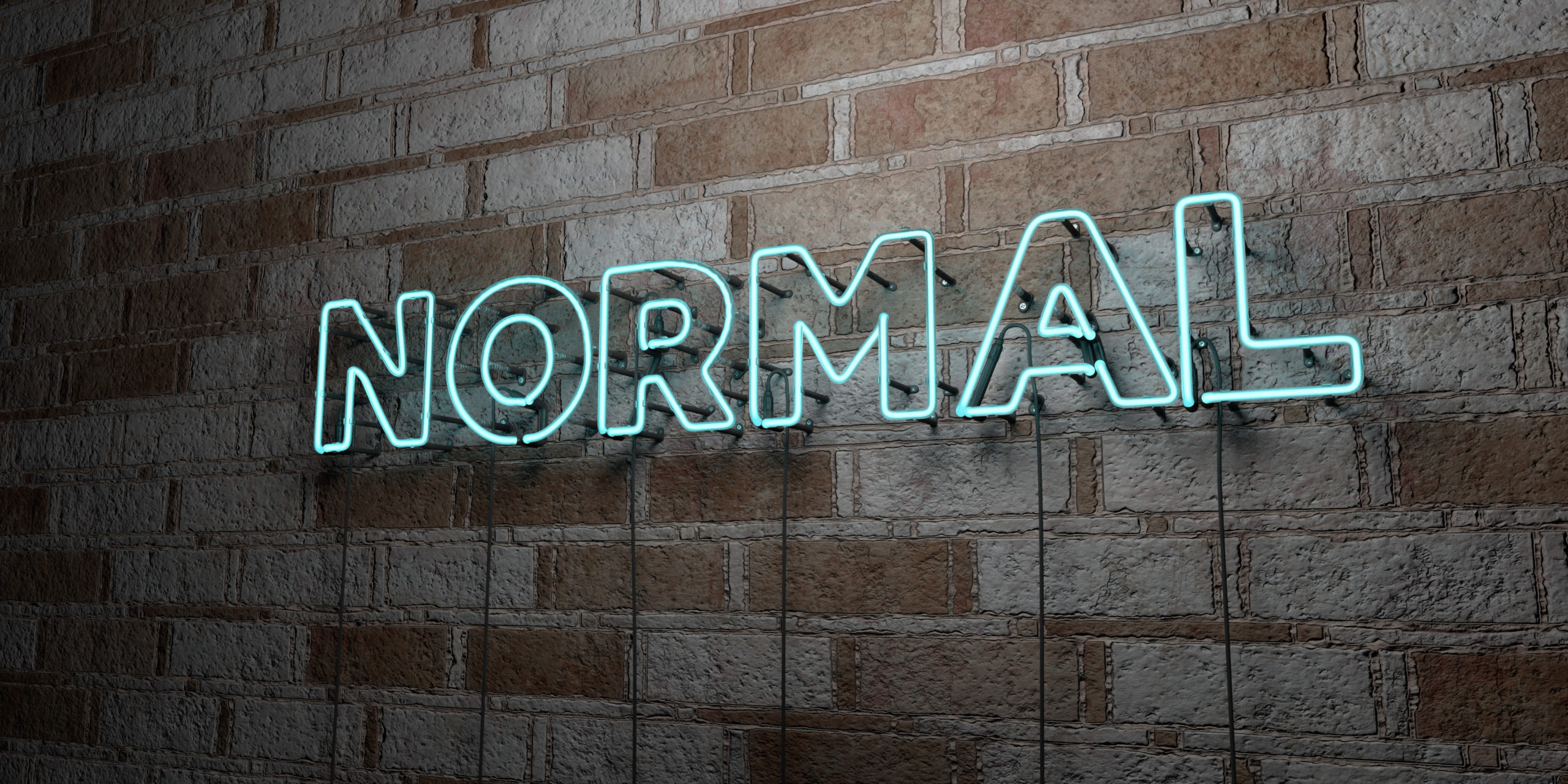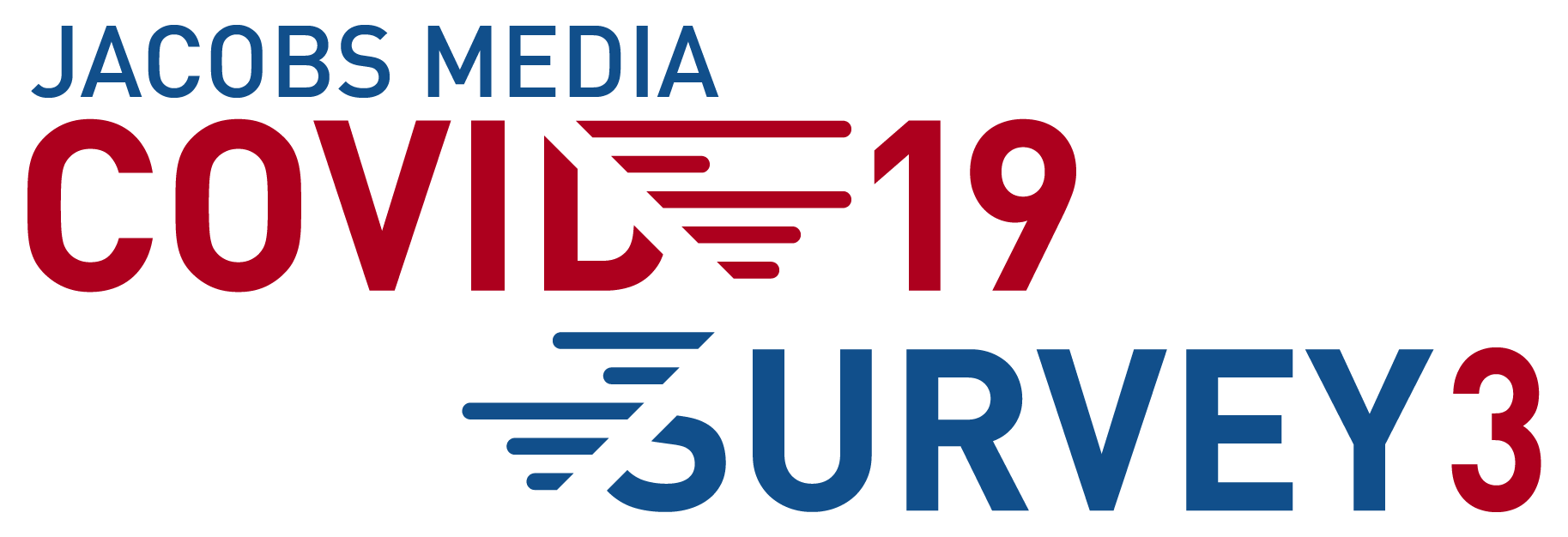
I know we’re all looking for signs – any sign – that our lives, our world, our businesses, our radio stations – might be returning to something we once so took for granted:
Normal
So much of 2020 has been about adjusting to what has been called the “new normal” – a nauseating, frustrating phrase that has gotten on our collective nerves. We can’t enjoy even the simple things – going to a concert, sitting at a bar watching a football game, or hugging friends and family members.
So many are trying to predict when there will eventually be a vaccine that is safe, effective, and accepted by a majority of the people who live here in the U.S. and around the world. The scientific community, of course, is hedging their bets. Even Dr. Fauci predicted the other day that life as we knew it won’t be the same until perhaps late in 2021.
So, I’m here with some good news. I think it’s coming sooner than that.
How do I know?
We’re all looking for the one omen – that moment that makes you realize that we’re back, at one with the universe, in our once hunky dory world.
And over the weekend, it happened. You may have missed it because it was purely a moment that only Motor City residents were perceptive and intuitive enough to pick up on and truly appreciate. But it happened, and it was the first time in months that something actually predictable, consistent, and yes, normal took place.
Ironically, it was on the football field. The Detroit Lions caved in the fourth quarter, losing a game to those evil Chicago Bears that for most teams would have been “in the bag.”
For the first three quarters, things were looking good. The Lions took a commanding 23-6 lead into that final 15 minutes of the game. But like a script from 2019 (2018, 2017, 2016, 1996, 1983), of course, Chicago rallied. With just two minutes to go, took a 27-23 lead.
But the true test was the Lions’ final drive. Would the Lions engineer a last minute comeback or go down in flames? Their truly great quarterback, Matthew Stafford, brilliantly led the team back down the field. With 11 seconds left to go in regulation, the Lions were comfortably sitting on the Bears’ 16 yard-line, poised to steal this game back from those dreaded Neanderthals from the Windy City.
And then the inevitable happened as you can see in the short, painful clip below. That’s the Lions in their familiar Honolulu blue and silver uniforms.
Denizens all over Metro Detroit just shook their heads…and smiled. It was truly the first “normal” thing we’ve experienced in a long time. In a sick way, it was comforting. And it bodes well for the future.
But if you’re programming or managing a radio station, you know that “normal” is a long way off. That easy routine you simply fall into, especially when you’ve worked for the same station in the same market for several years, becomes like a friendly pattern.
Each year, you block out the calendar with the same events, often preceded by the number of years you’ve done them. The “12th annual this” or the “9th annual that” become rote – a pattern that plays itself out again and again like clockwork.
Your holidays events, your fundraisers, your contests, your morning show promotion – all the events, vehicles, and tricks that work so well, year in and year out – are methodically planned, scheduled, and presented to the sales department.
But not this year, and certainly not this Q4 when familiar touchstones like Halloween, Thanksgiving, Black Friday, Christmas, and New Year’s occupy  fixed positions on every programmer’s calendar. In public radio, it’s the pledge drives and other year-end activities, always locked in because the station does them every year.
fixed positions on every programmer’s calendar. In public radio, it’s the pledge drives and other year-end activities, always locked in because the station does them every year.
And then there’s the knowledge you’ll be juggling airstaff vacations, often a frustrating game of human Sodoku. You know the sales pressures that always accompany the year-end. They’ll still be around. And of course, the office, station, or cluster holiday party, an event that often produces awkward moments and unintended consequences.
And even that sense of dread that cuts, layoffs, and reductions may be that lump of coal in yours or someone else’s stocking.
In short, you know the drill, the routine, and the moves.
But not this year. None of these familiar events and moments are looking to have much semblance of “normalcy” as we close out a horrific 2020. And that means most of us are going to have to do some reinventing, all while likely working from home, with no budget, and a depleted staff.
This time around the sun, the familiar patterns must change. There won’t be neighborhood trick or treating. There will be Thanksgiving Zoom feasts. And the malls and airports are going to look a lot different this year.
The food drives, radiothons, and other charitable activities your station typically engages in will require clever reimagination. Their need will be greater than ever, but their planning and execution will need knowledge, information, creativity, and a warm touch.
There will likely be some disappointment in the air, especially felt by listeners of all ages who will face their favorite holidays with big limitations and caveats this year. Even hearing Brenda Lee and Burl Ives on the radio won’t ease the pain. And part of your job is to find a way to enchant, delight, and satisfy your fans at a time when they’re especially vulnerable, emotional, and maybe even depressed.
Capturing the mood, the vibe, the zeitgeist of your market and your tribe is always the key, but in this year of 2020, it will all require much more creativity, innovation, and reinvention.
We’re here to help.
 In just a few days, we’re launching a new COVID 3 study – a follow-up to our two previous deep dives into the psyches, media habits, and consumption patterns of your core listeners. Our earlier studies were conducted in early April and mid-May, and captured those moments perfectly, first following the initial lockdown, and then the ease of restrictions and early reopening that paved the way for the brier patch we find ourselves in now.
In just a few days, we’re launching a new COVID 3 study – a follow-up to our two previous deep dives into the psyches, media habits, and consumption patterns of your core listeners. Our earlier studies were conducted in early April and mid-May, and captured those moments perfectly, first following the initial lockdown, and then the ease of restrictions and early reopening that paved the way for the brier patch we find ourselves in now.
This new study will track many of the key questions from the first two waves – including media habits, employment status, and the audience’s emotional state. But it will cover some key questions radio management, sales, and programming teams need to know:
- Shopping spending and location (stores, malls, online)
- Black Friday and Cyber Monday plans
- Holiday entertaining plans (parties, stay at home, travel)
- Gifting
- Health and fitness
- Tech purchases and giving
- The desire to support local businesses
- Health and safety concerns
- Contest interest
It’s ambitious, but important. And if you’re a North American commercial radio station, we’d love to have you participate in this one to help us build a great sample of radio listeners and to help you plan, plot, and strategize your Q4 game plan, end of year budgeting, and activities as we turn the page on this brutal year and look ahead to 2021.
If you have a reasonably good database, a solid social presence, and a few hundred bucks, you’re in. And the results will hopefully be the information you need to guide your programming and sales teams through these rough waters.
you need to guide your programming and sales teams through these rough waters.
Our wish is for you, us, all of us to end this year on as “normal” a note as possible. And arming you with fresh, reflective, and accurate audience information is our goal.
2020 has been a rough year for radio, and our hope is this study will help strengthen your station’s revenue in the final quarter of the year.
And so you know, we’ll be watching those Lions intently for the rest of this already strange NFL season.
An ill-timed shanked field goal, a costly turnover, a pick 6 late in the game, or a blocked punt will be warmly welcomed just like they are every year.
Here’s to all of us having a better fourth quarter than the Lions usually do.
We can only hope.
Get more information on our COVID 3 study and register here.
- What To Do If Your Radio Station Goes Through A Midlife Crisis - April 25, 2025
- A 2020 Lesson?It Could All Be Gone In A Flash - April 24, 2025
- How AI Can Give Radio Personalities More…PERSONALITY - April 23, 2025




So while my office is in New York City, I’ve been working all summer from Traverse City, Michigan. Michigan is one of the few states that is not on the “quarantine list” for travelers going to New York. This Sunday I decided I would stop being a New York Jets fan and move my allegiance to the Detroit Lions. My neighbors all warned me history was not good. But Matt Stafford was back and I was all in. And there it was, the ending my neighbors warned me of. Oh, and the Jets lost as well. So Sunday was the first normal day for me in a long time…
Welcome back. We are at one with the universe. By the way, the last time the Lions got off to a great start – 4-0 – was in 1980. A version of “Another One Bites the Dust” was recorded by safety Jimmy “Spiderman” Allen and was all over the Detroit radio airwaves. It was the year they got Billy Simms and there was much optimism. The team predictably screwed up down the stretch, finished 9-7, but failed to make the playoffs because the Vikings had a better conference record. Every time I hear that song on the radio, I think of that hapless Lions team.
Sorry for your loss(es), Fred.
I’m lucky enough to be in New England, where winning has been an expectation. Even without Tom Terrific, I think Bill will lead us into the playoffs again.
On another note, in today’s blog, you also spoke of 4th quarter, but nary a mention of the elections.
Be prepared, Fred.
I have a gut feeling this one’s gonna get uglier by the week…even after Nov 3rd.
No doubt about that, JC. I’ts already up there on the gnarly scale. Thanks for engaging.
Dystopian warning!!
Radio will never go back to normal. The last serious, but much less serious than this one, recession cost radio 1/3 of its revenue and at least that % of its employees – and neither ever returned, despite and economy that for the most part did.
This recession is deeper and is punctuated by permanent work location changes that will permanently impact radio listening – not just in raw numbers but in psychographics – the ones working from home are more likely to be educated and upscale and listening to less radio. On can only guess at what that will do to radio’s revenue, but a 50% permanent reduction seems reasonable – leaving radio with roughly 1/3 of the revenue it had less than 15 years ago.
Further, if past is prologue (and I’d wager a lot that for radio it is it is), radio won’t do anything to try to recapture any of the lost audience or revenue but just adjust its expense line to reflect the loss in revenue. And they will focus (because its easiest) those cuts on the areas that could most effectively reverse the decline – local talent and programming decisions and skilled (read expensive) consultative sales and sales management.
The death of radio at the hands of digital media has been predicted for awhile now and I always thought it would be more of a death by a thousand cuts – literally. As it turns out, YouTube. Spotify and BandCamp won’t be the radio slayers, it will be its C-Suite executives.
It’s like a never-ending episode of “Black Mirror,” Bob. It’s a challenge today, of course, and it will be a tough test on the other side of this pandemic.
Specifically the Prime Minister and the pig episode which, to this day, gives me nightmares.
The first one I saw (first in the series?), and the most terrifying. Thanks for reminding me! 🙂
The Eagles blew a 17-point lead ….and the Phillies are tanking in the last month of the season…..another possible return to normalcy.
I agree with JC……this will be a very ugly 4th quarter with the election results probably not being determined for weeks…..maybe longer. We can’t control that but it sure will affect how we program, won’t it?
Would seem that way, John. Another tough period for all of us – and radio programmers.
I may be thinking contrarily to conventional wisdom here, Fred, but nothing “conventional” seems to apply now.
I think radio listeners are seeking consistency as a comfort level, which means we need to do what we do in providing a predictable sound even better than we already have. The slight bump in listening now means that those of us who rely on gold for our formats (which is why I see what I do in Classic Hits as being closely aligned to what you do in Classic Rock) need to pay even closer attention to rotations and scheduling rules that prevent listeners from hearing any specific title too often.
We know that, provided those repeat exposures are properly spaced, the audience does want to hear those songs over and over again. They comprise an audio “teddy bear” of sorts … or perhaps Linus Van Pelt’s “security blanket”. We probably have room for “accents” more than we did before, but we’ve got to choose carefully, make sure they are highlighted as “special”, don’t repeat for LONG periods of time, and surround with the strongest titles in the library.
There is probably more room for syndicated weekend programs (the American Top 40 reruns and M.G. Kelly’s shows come to mind for my format) to take advantage of increased listening as well. Or you might do what Jhani Kaye did at KRTH and find creative ways to present the regular library based on shared characteristics.
Like I said, some of this defies conventional logic, but we need to break out of the box somewhat now that we have the “new normmmphrrrr” (stop shoving my mask into my mouth, Fred!).
KM, you are on the right track here, and you’re reading the “tea leaves” of today correctly. People are listening differently now, likely tuning in fewer stations. So, while the cume is off, those tuned in are listening longer. So, we’d better make it more interesting.
Now take that mask out of your mouth! You’ve got a break coming up.